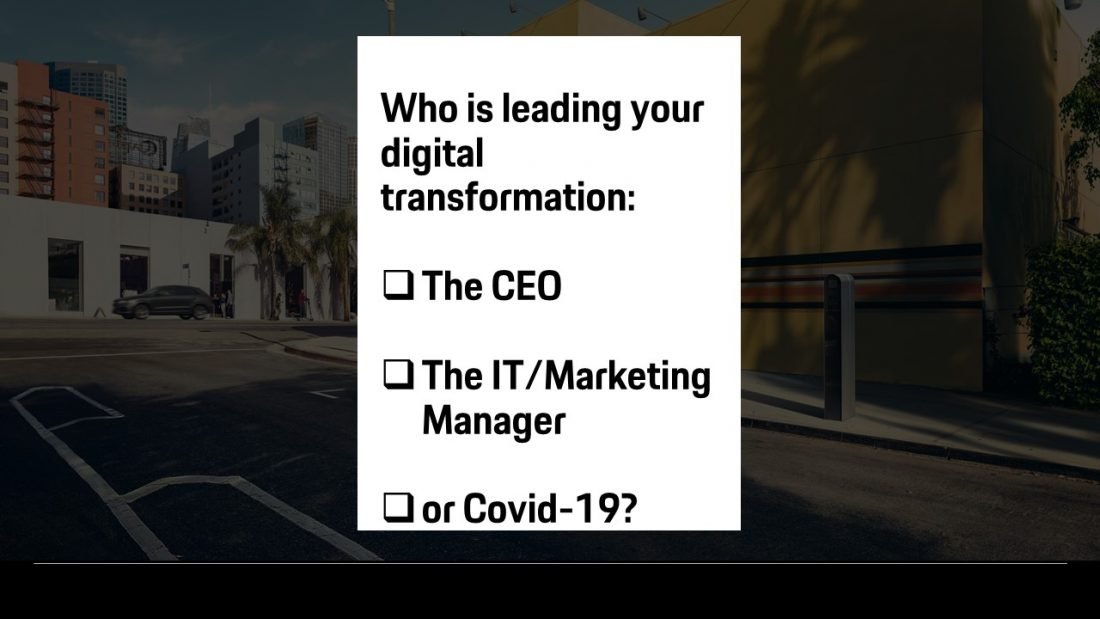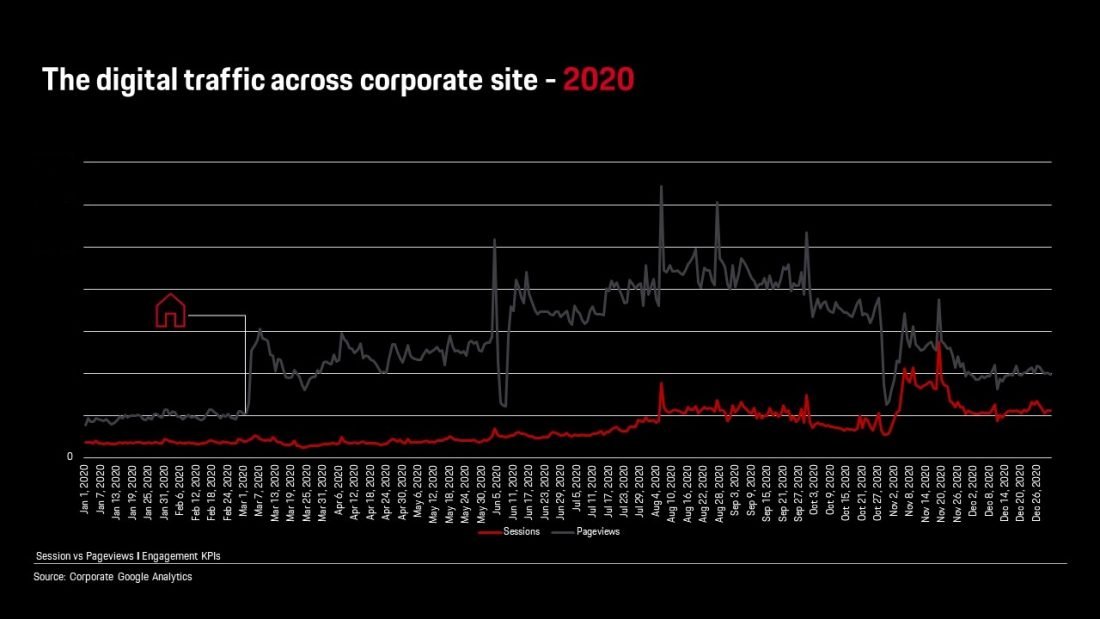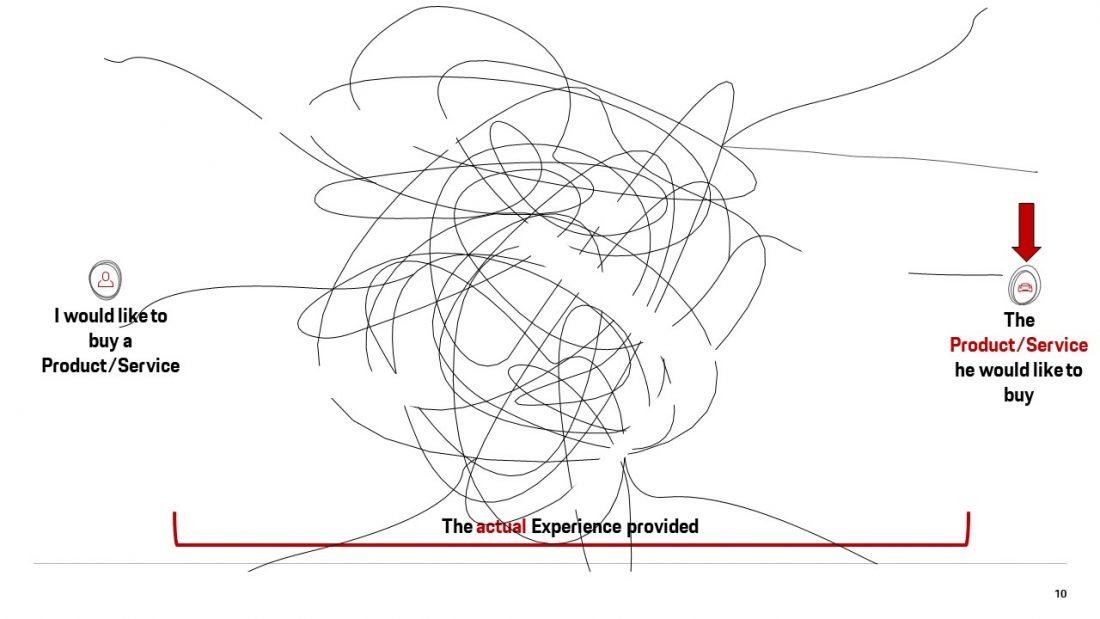Digital Transformation In The Automotive Industry: Transforming A 137+ Years Old Industry
By: Antonio Mara, Digital Marketing Manager at Porsche Middle East and Africa
Digital on four wheels.
How do you even associate the words Digital and Transformation with an industry that has changed its offer only incrementally since 1885 when Mr. Benz patented the Motorwagen?
In roughly 137 years, even if infinitely more complex and faster, automotive products still maintain the initially designed core elements such as four wheels, a steering wheel, and seats for passengers.
Most importantly, it solves the exact same need it was invented for: moving people or goods from A to B.
2020 – a digital year, not by choice.
2020 has not been a normal year as we all know, and unfortunately the global pandemic has impacted and shaped the way we all live and interact with each other.
However, in the digital space, COVID-19 has been the main driver of a massive disruption wave that, in less than 12 months, has singularly caused a significant spike in digital adaptions across several industries and business areas.

In order to run their day-to-day operations businesses had to solely rely on the digital space and its tools, given the many restrictions in place in the offline world. The main consequence of limiting people movement in the physical world for our industry has been a drastic reduction of dealership footfall.

Offline Showroom Visit. Source: 3rd party externa supplier based on specific location
On the other side, the traffic across the digital properties has skyrocketed with a massive spike of online visits at the beginning of the lockdown. Since customers were not able to visit physical showrooms, online car configurators registered the highest number of interactions in a short spam of time. What most people in our industry did not believe to be possible, it was achieved with Virtual consultation, online configurations, on demand test drives to home and finally car home deliveries.

The key learning and take-aways are that, as two perfect sides of the same equation, the online space complements and supports the offline.
Before COVID-19, this basic and logical concept was not so clear to the majority of the marketeers in the retail industry. Infact, the online space was treated and seen as a collateral to the offline ecosystem and not like an alternative ground to experience brands and services.
Digital Transformation: a buzz word with a huge implication
In my opinion, Digital Transformation in our industry can be easily compared to driverless driving:
Everyone talks about it,
It has enormous potential to impact our lives,
As with every buzz word (or concept) it is used by many people across industries and departments,
Only a few people know the difference (or its layers) and how it can be achieved.
What I have witnessed during the recent years across my professional network, is that only a handful of colleagues have made the effort to really explore the topic and its implications in our industry.
This is when, later last year, I took the decision to enrol in one of the few Digital Transformation-focused courses provided by a leading university.
The 1M AED question: What is Digital Transformation?
Digital Transformation is the latest in a long history of business transformation precipitated by technological innovation. As every transformation, it is about changing the solution experiences provided to customers or prospects.
To do that, we need to focus on the processes behind the product/service we offer as a company. It is so radical and disruptive, that most of the organisations out there are missing the entire point, simply by scratching the surface of it.
In addition to processes, digital transformation is about data. Information-based innovation is not a new concept; however, leveraging digital data and transforming the flow in the customer experience (or user experience) is the core of any Digital Transformation initiative. Ultimately, and forgotten most of the time, changes are made by individuals (colleagues) that need to understand and embrace the new vision.
In a nutshell, if you oversee a Digital Transformation process in your organisation, equip your People to collect, monitor, and change data flows to design the best possible business process.
As a result, your organisation will be able to tailor the best solution experience for your prospect or customers’ needs.
Business or Customer-Centricity?
Coming back to the automotive industry, in my view, we are not leveraging all the possibilities that emerging technologies could enable.
Retail, as a sector, is one of the slowest to follow the customer experience revolution that many other industries have embraced.
Let’s be clear, nowadays, customers are more digitally literate than brands, demanding a seamless and omnichannel experience. When I put myself in the shoes of a prospect, I can still experience many discontinued and siloed approaches between the online and offline touchpoints.
In some instances, it is quite a challenge to simply book a test drive without having a phone call conversation or an instant message repeating your intention many times to different brand representatives.

Because of this bumpy and disconnected journey, customers perceive that the brands don’t really know them even if previous interactions occurred. So frustrations arise.
It looks like magic, but it is not.
How do we provide an innovative and unique customer experience for our brand that is seamless, omnichannel and focused on the customer? The same way a great illusionist makes a bunny appear from the hat, tricks.
What looks like magic to the customers ‘eyes, is nothing then a complex set of technologies, processes and people that orchestrate perfectly the most relevant experiences for them based on the overall (online & offline) collected information.

Personalization and relevancy are the key in any journey, and this can be achieved only when the online and offline signals can be merged into a unified profile.
There are industries that master this approach and have been leading in the field of personalization and price discrimination such as the airline sector. Still wondering why airfare ads are popping up across every digital touchpoint you visit?
Of course, having a business conversion happening online helps since the entire journey starts and ends in the binary space, however, an offline conversion such as the Automotive industry one, should not be an excuse to provide an excellent and best-in class customer experience to our prospects.
Digitalization is not Digitalization
Most of the organisations out there, are also mistaking Digitization with Digitalization
While the first one describes the pure conversion of analog information into a digital format, the second is defined as the use of digital technologies to change a business model and provide new revenue and value-opportunities.
These are two separate concepts, even if interlinked, that need to be planned and managed by the same mastermind in charge of implementing digital transformation initiatives within the organisation.
We cannot simply apply technological solutions to our business and not collect, connect, analyse, and act on the digital signals that any user/customer produces while engaging with our online touchpoints.
Proving the best possible customer journey is a two-man job: Online and Offline. A seamless journey can be only achieved if a unifying data strategy is in place empowering your team to get a clear and complete picture of the customers’ interactions with the brand. Still most Retail and Automotive are behind.
Quoting Nicholas Negroponte, one the most revolutionary figure of the digital world “Like air and drinking water, being digital will be noticed only by its absence, not its presence.”Conclusion: In Digital Data we trust.




